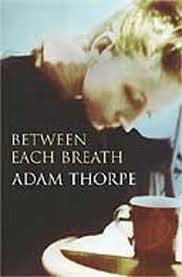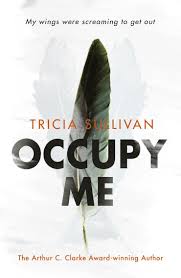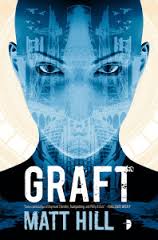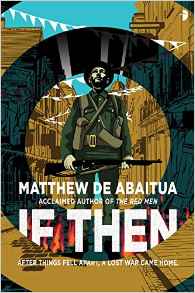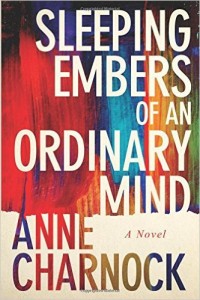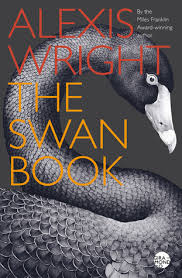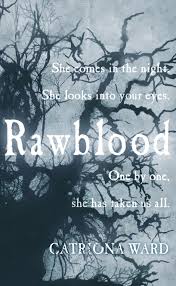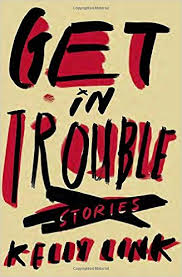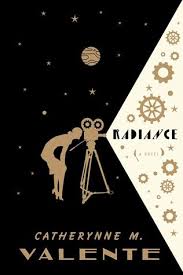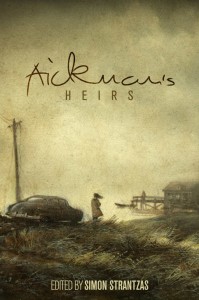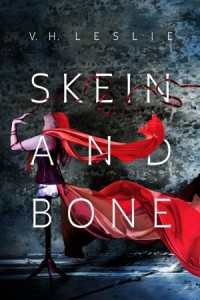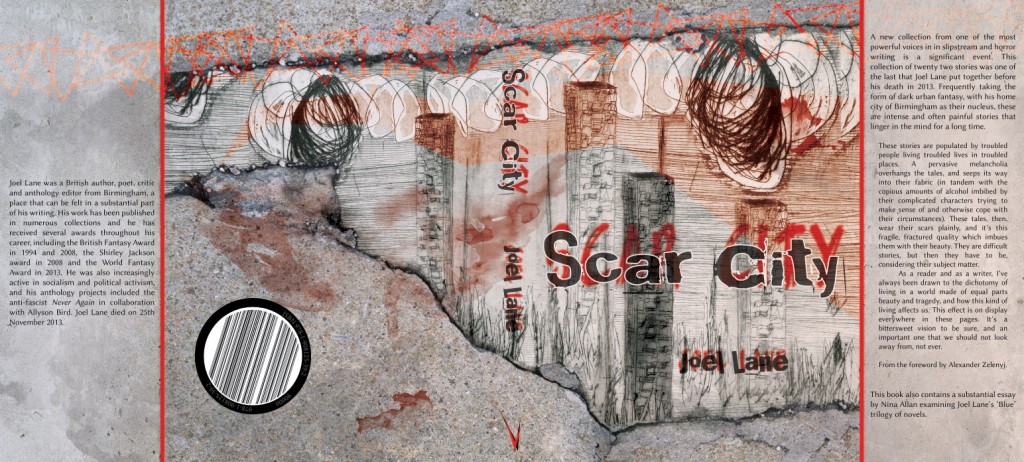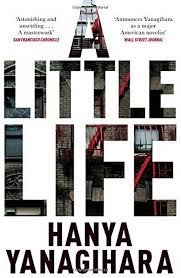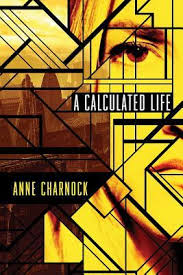So – we now know that the total number of books submitted for this year’s Clarke Award was 113. You will find the full list here, together with some analysis of the figures. Personally I think it would be equally interesting and relevant, certainly in literary terms, to track the percentage of genre versus mainstream imprints. I find it fascinating to look at how far and how successfully science fiction is permeating the literary mainstream, and the effect this may be having – or not – on the genre heartlands.
With this in mind, I want to focus, firstly, on those books that immediately leap out as being the most interesting contenders for me personally – a personal longlist, if you like:
The Heart Goes Last – Margaret Atwood (Bloomsbury)
Acts of the Assassins – Richard Beard (Harvill Secker)
Sleeping Embers of an Ordinary Mind – Anne Charnock
If Then – Matthew De Abaitua (Angry Robot)
Speak – Louisa Hall (Orbit)
Wake – Elizabeth Knox (Corsair)
Dark Star – Oliver Langmead (Unsung Stories)
Signal to Noise – Silvia Moreno-Garcia (Solaris)
The Book of Phoenix – Nnedi Okorafor (Hodder)
Arcadia – Iain Pears (Faber)
SNUFF – Victor Pelevin (Gollancz)
The Dead Lands – Benjamin Percy (Hodder)
The Thing Itself – Adam Roberts (Gollancz)
The Shore – Sara Taylor (Heinemann)
The Weightless World – Anthony Trevelyan (Galley Beggar)
Find Me – Laura Van Den Berg (Del Rey)
The Fifth Dimension – Martin Vopenka (Barbican)
The Swan Book – Alexis Wright (Constable)
That’s eighteen books – enough to make three complete shortlists, in other words. Add to those the following – books that wouldn’t necessarily come top of my own reading list, but solidly worthy contenders that will almost certainly be featuring in any upcoming discussions among the judges:
The Water Knife – Paolo Bacigalupi (Orbit)
Mother of Eden – Chris Beckett (Corvus)
The Long Way to a Small Angry Planet – Becky Chambers (Hodder)
The House of Shattered Wings – Aliette de Bodard (Gollancz)
Europe at Midnight – Dave Hutchinson (Solaris)
Ancillary Mercy – Ann Leckie (Orbit)
The Three-Body Problem – Cixin Liu (Head of Zeus)
The Galaxy Game – Karen Lord (JFB)
Something Coming Through – Paul McAuley (Gollancz)
Luna: New Moon – Ian McDonald (Gollancz)
Planetfall – Emma Newman (Roc)
Touch – Claire North (Orbit)
Crashing Heaven – Al Robertson (Gollancz)
Aurora – Kim Stanley Robinson (Orbit)
Glorious Angels – Justina Robson (Gollancz)
Regeneration – Stephanie Saulter (JFB)
The Promise of the Child – Tom Toner (Gollancz)
The Just City – Jo Walton (Corsair)
…and that gives us another eighteen. Which is thirty-six books in all, six shortlists’ worth, and a solid third of the overall number of submissions. For anyone interested in odd statistics of my own, I’ve been breaking down the shortlist in this way for about five years now and the percentage of what I think of as credible contenders has always been roughly the same. Anyway, I feel fairly confident in predicting that our winner is hiding amongst this lot somewhere.
Moving on to shortlist guesses. First off, my own personal choices – the books I would choose (as of this moment and not having read everything) if I were sole judge and jury:
ACTS OF THE ASSASSINS – Richard Beard. WHY? Philip Hensher liked this and I’ve seen several other people whose opinion I trust saying good things about it, too. I read the Kindle preview and found the style, approach and form immediately compelling. I felt eager for more, both of this book and from this writer.
SLEEPING EMBERS OF AN ORDINARY MIND – Anne Charnock. WHY? Charnock employs speculative ideas in a subtle and sensitive interweaving of three interconnected narratives. Almost like a mini Cloud Atlas, Sleeping Embers demonstrates how lives and futures remain connected, even at a distance of hundreds of years. It is a beautiful book and Charnock is a writer of real merit.
IF THEN – Matthew de Abaitua. WHY? Because I consider this to be one of the most complex and important works of British science fiction to have appeared in recent years.
THE SHORE – Sara Taylor. WHY? Because this is a superb work of literature from a seriously talented new writer. Because I loved this book unreservedly and still think about it often. Because the speculative elements are subtle and sensitively handled (one of the most interesting post-apocalyptic endings I’ve read). Because I’m already eager to read it again, less than a year after first encountering it. Because it’s a wonderful book in every way.
FIND ME – Laura Van Den Berg. WHY? This novel starts out reading like a conventional post-apocalyptic story but gradually morphs into something quite different: a meditation on outsider status and contemporary America that is powerful and moving. I loved the characters. I loved the weirdness. I loved the evocation of depleted landscapes.
THE SWAN BOOK – Alexis Wright. WHY? Because this is an important book from an important writer. Wright’s use of language is extraordinary. The Swan Book is speculative in every sense of the word. Although it was shortlisted for both the Miles Franklin Award and the Stella Prize in its native Australia, it hasn’t received half the attention it should have here in the UK, especially within genre circles.
There’s no way the actual shortlist is going to look like that, obviously, not least because the actual Clarke jury is made up of five people, not one, and each with their various tastes and priorities coming into play. We know only too well that no one person’s interpretation of what is ‘best’ in science fiction is the same as another’s, and with this in mind, I’m going to hazard a guess of how the shortlist – revealed April 27th – might realistically line up (again with the proviso that I have not read all the books):
IF THEN – Matthew de Abaitua. WHY? Because, seriously, if this book doesn’t make the shortlist there’s something amiss.
SPEAK – Louisa Hall. WHY? I’ve not read this yet but it looks wonderfully interesting and I’m hoping the judges will put it forward.
EUROPE AT MIDNIGHT – Dave Hutchinson. WHY? Already shortlisted for the Kitschies, the second instalment of Hutchinson’s Europe trilogy is easily as weird, interesting and distinctive as the first. It’s good to see Hutchinson beginning to attain his rightful place within British science fiction, and I think there’s a good chance that Europe at Midnight will follow in the footsteps of its predecessor Europe in Autumn, thus landing him on the shortlist for a second year running.
THE THING ITSELF – Adam Roberts. WHY? Again, I haven’t read this yet but the premise is fantastic and I’ve heard almost unanimous praise for it among critics I respect. I was pleased to see it make the Kitschies shortlist and I wouldn’t be surprised to see it here, too.
AURORA – Kim Stanley Robinson. WHY? This book has garnered vast swathes of effusive outpourings among core SF readers, and Stan Robinson is one of the best stylists among core SF writers. This novel seems to appeal to most sections of the SF community on one way or another and I’d be amazed if it didn’t feature.
GLORIOUS ANGELS – Justina Robson. WHY? I started this, got about a third of the way through. Not really my thing, but I can see that it’s a complex, thoughtful and interesting novel and I think those judges who lean further towards core SF than I do will better appreciate its qualities. I have a hunch that this could be Robson’s year.
It’s going to be fascinating to see what actually surfaces – but then, that is the case every year, especially when all our best guesses are confounded…
